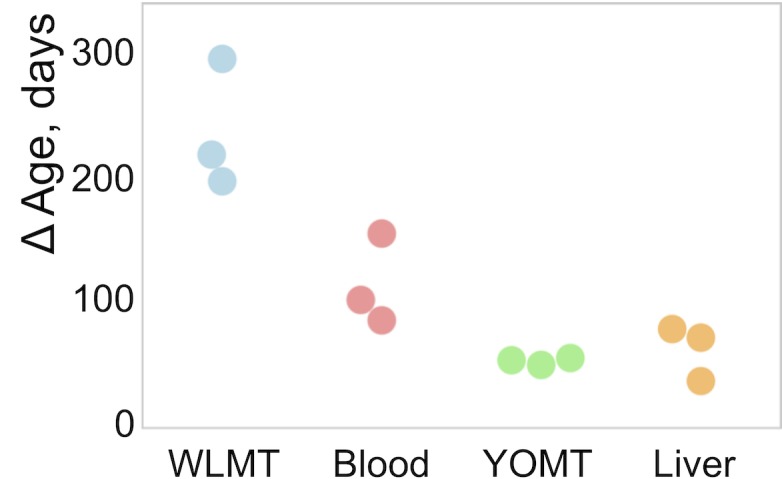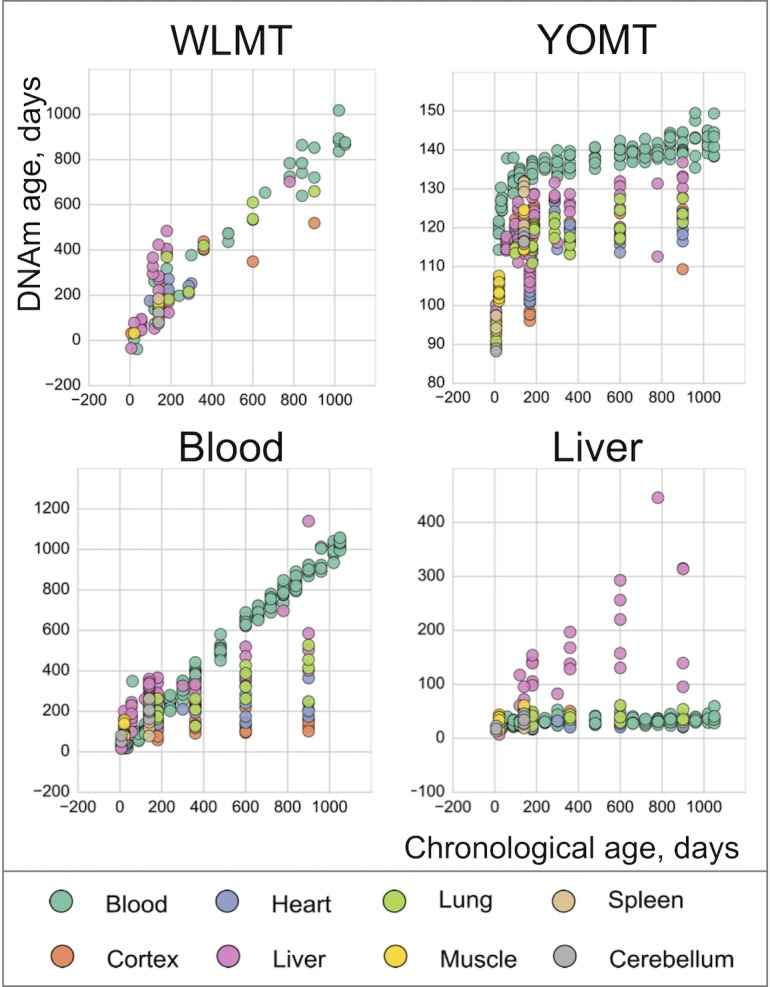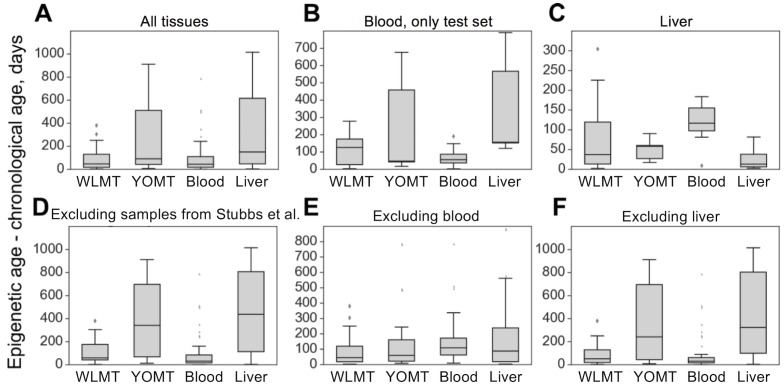Figure 3. Absolute errors of four mouse DNAm clocks applied to untreated wild-type samples.
(A) In this case, WLMT clock was applied to its test set, whereas for the other age predictors this set also included their training set samples. (B) Blood samples which were not used in any of the clocks. (C) Only liver samples. (D) Samples of all tissues, excluding those used in the YOMT clock. (E) Samples of all non-blood tissues. (F) All tissues, excluding liver.
Figure 3—figure supplement 1. Performance of the WLMT, blood, YOMT and liver clocks on the liver samples not included into the WLMT and liver training sets.

Figure 3—figure supplement 2. Performance of the WLMT, blood, YOMT and liver clocks.


